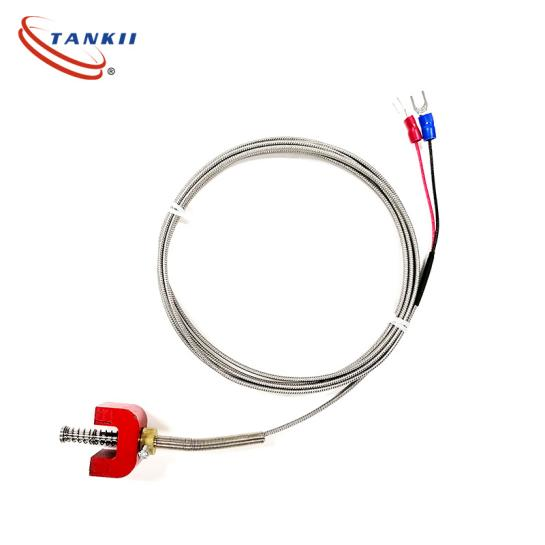When working with thermocouples, accurately identifying the positive and negative wires is crucial for proper operation and reliable temperature measurement. So, which wire is positive and negative on a thermocouple?
Here are several common methods to distinguish them.

Firstly, many thermocouples are color - coded. This color - coding system is a quick visual reference, but it's essential to approach it with caution. For example, in type K thermocouples, which are among the most widely used thermocouples due to their relatively wide temperature range and good stability, the positive wire is usually made of chromel and is often colored yellow, while the negative wire, made of alumel, is typically red. However, color - coding standards may vary in different regions or according to different manufacturers. In some non - standard or older installations, the colors might not follow the typical convention. Therefore, don't rely solely on color for identification; it should be used as an initial guide.
Another reliable way is to check the wire materials. Different types of thermocouples are composed of different metal alloys, and each type has a defined positive and negative wire based on these materials. For instance, in type J thermocouples, the positive wire is made of iron, known for its good response in certain temperature ranges, and the negative wire is constantan, which offers excellent stability and compatibility with iron. By referring to the official thermocouple type specifications, which detail the exact composition and polarity of each type, users can determine the correct polarities with greater certainty. Additionally, some advanced thermocouples come with datasheets that not only list the materials but also provide additional information about the expected electrical characteristics related to the positive and negative wires.
Our company’s thermocouple wire products offer distinct advantages in this regard. We clearly mark the positive and negative wires on all our products, not only through standardized color - coding but also with clear labels. The labels are printed using high - quality, durable ink that won't fade or wear off easily, even in harsh industrial environments. This dual - identification system ensures that users can quickly and accurately identify the wires, saving time and reducing the risk of incorrect connections.
Moreover, our thermocouple wires are made from high - quality metal alloys with excellent thermal stability and durability. The manufacturing process involves strict quality control at every stage, from the selection of raw materials to the final packaging. Whether it's for high - temperature industrial applications, such as steel manufacturing where temperatures can reach extremely high levels, or precise scientific experiments that demand minute accuracy, our products can maintain stable performance and accurate measurement results. We also conduct rigorous testing on each batch of thermocouple wires, including tests for electrical conductivity, thermal emf stability, and mechanical strength. With these strict quality control processes, we guarantee that the positive and negative wires in our thermocouple products meet the highest industry standards, providing you with a reliable solution for temperature measurement.
In conclusion, while there are multiple ways to identify the positive and negative wires of a thermocouple, choosing our high - quality thermocouple wire products simplifies the process and ensures accurate and stable temperature measurement. Our commitment to quality and user - friendly design makes us the ideal choice for all your thermocouple wire needs.
Post time: May-06-2025









